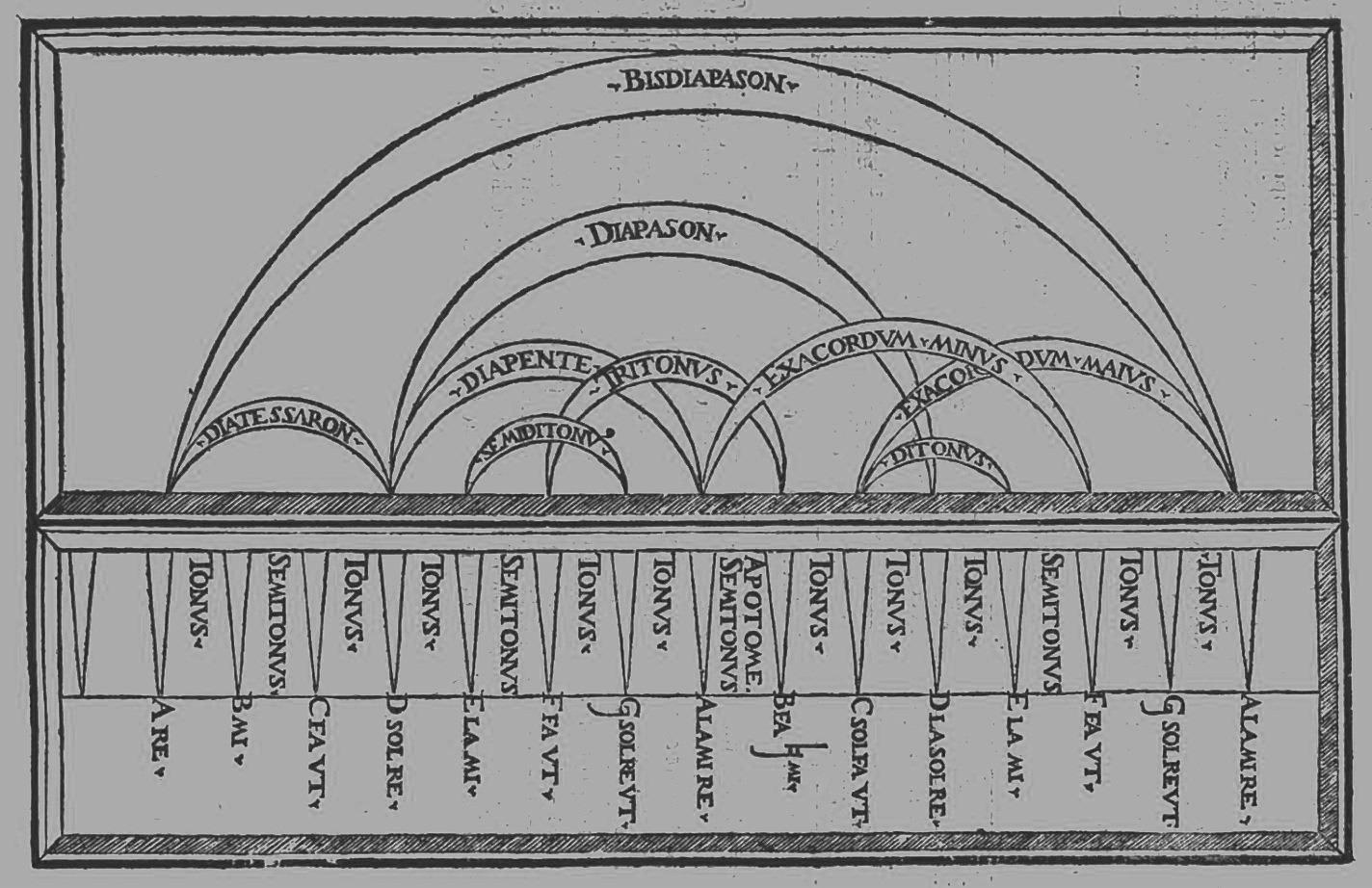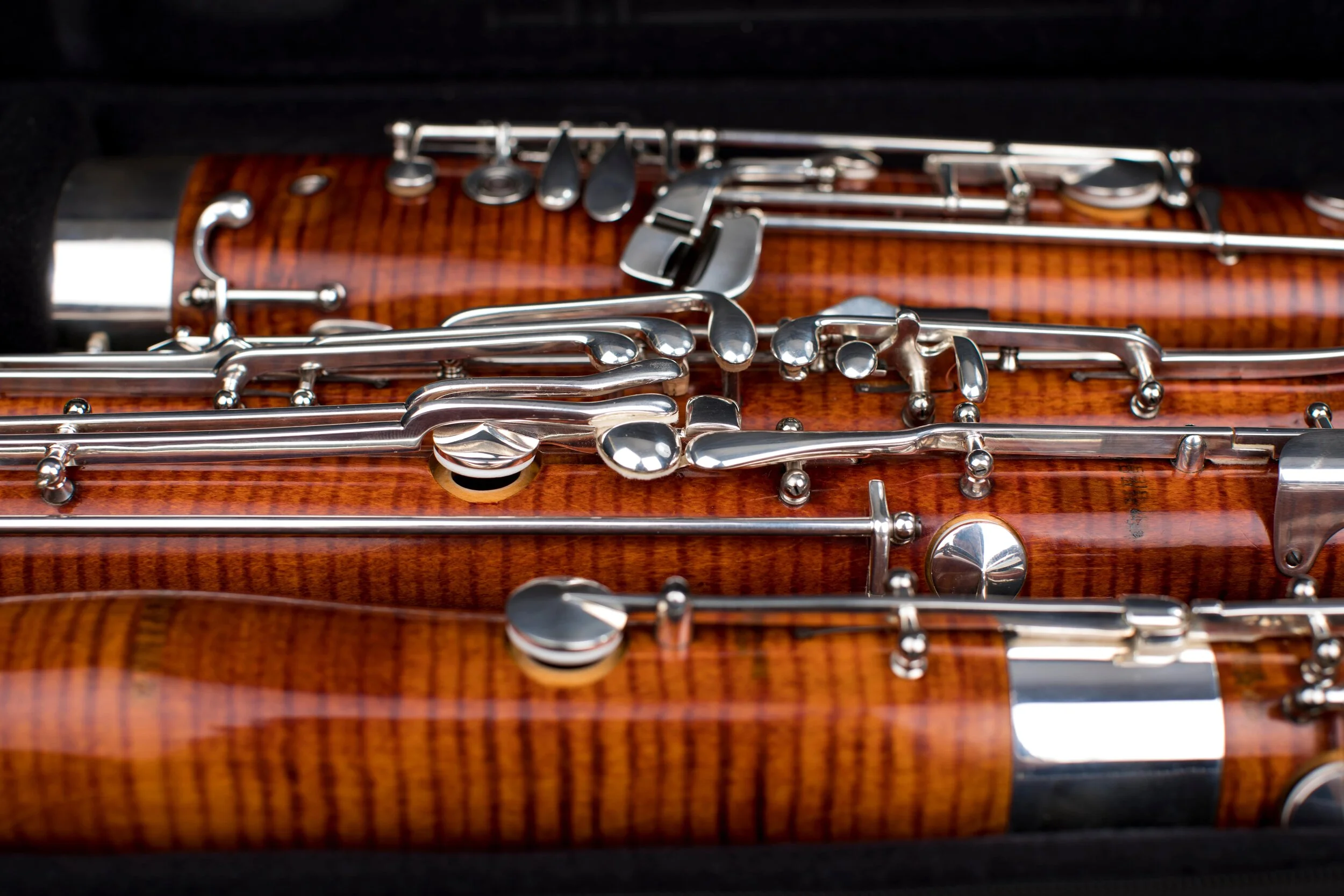

“I’m Not that Girl” by Cynthia Erivo from Wicked
Welcome to the land of Oz, a land of hope, joy, magic, and resentment. A land that is not yet discovered by Dorothy, but act as the building blocks before her arrival. This is Wicked. The movie Wicked is an adaptation of the original Broadway musical. It follows the story of how Elphaba, an “outcast” born with green skin and magical powers, becomes the Wicked Witch of the West. For my analysis, I will be using the movie adaptation of Wicked, along with the 2024 movie soundtrack recording of “I’m Not That Girl” by Cynthia Erivo, who plays Elphaba. In Cynthia Erivo’s recording of “I’m Not That Girl,” the emotional narrative is supported by Cynthia’s use of an expressive vocal timbre.

Orchestration as Form in Elisabeth Lutyens’s And Suddenly It’s Evening (1966)
A work of haunting beauty and mystery, And Suddenly It’s Evening (1966) is a cantata for tenor and orchestra by English modernist pioneer, Elisabeth Lutyens (1906-1983). The cantata is highly representative of Lutyens’ serialism of the mid 1960s, and is similar to other works of this period, especially The Valley of Hatsu-Se (1965), in terms of scope, the serial structure, lyricism and the approach to orchestration. The evocative poetry of the cantata was written by Sicilian modernist poet and Nobel prize laureate (1959), Salvatore Quasimodo (1901-1968), and translated into English by Jack Bevan in 1965.[i] Lutyens first wrote the work to the English translation, later adding the original Italian (as determined from examining the composer’s autograph).[ii] In this work, Lutyens sets four poems by Quasimodo, each in its own movement, with instrumental interludes on either side of each poem. The cited recording was conducted and sung by Herbert Handt (who premiered the work) with members of the BBC Symphony Orchestra in 1967. In this analysis, I examine how Lutyens creates and demarcates form through orchestrational groupings in her cantata, which alongside pitch serialism, is the main compositional determinant.

Across the Skies - Wenchen Qin
The repertoire of Chinese composer Wenchen Qin is often characterized by immediate connections to the topics of nature and religious spirituality. For Qin, the religious connotation in his music often serves specifically as the medium connecting humans and nature. One only needs to look at the titles of his works to see the prevalence of these two topics: Pilgerfahrt im Mai (Pilgrimage in May) (2004), The Nature’s Dialogue (2010), The Border of Mountains (2012), The Cloud River (2017), The Light of the Deities (2018), Poetry of the Land (2020), among others. Qin’s proclivity for these topics can be traced back to his childhood in Inner Mongolia where he was born. The vast landscape of Inner Mongolia, with its endless grassland interspersed with surging mountain ranges, bears a palpable trait of ruggedness and broadness of space, of which one can often identify musical counterparts in Qin’s music almost viscerally.

Professor Bad Trip: Lesson III — Fausto Romitelli
Professor Bad Trip: Lesson III (2000) is a piece for small ensemble composed by Fausto Romitelli, constituting the last part of his Professor Bad Trip triptych (1998–2000). As suggested by the title, Romitelli sought an aesthetic that evokes hallucination, plunging the listener into a state of illusion and bewilderment.

Orchestration of Sonorities in Renaissance Polyphony
We might think about how a single voice part within a composition expresses a mode (one of the prevailing systems governing the organization of pitch in this period), or how multiple voice parts move against one another (counterpoint, from the Latin contrapunctus—literally means note-against-note), creating successions of intervals. This essay focuses on the amazing moments ensconced in those intervals: the way they are arranged, the spaces between them, and ultimately, the sonorities they create.

Icicle — Robert Aitken
Icicle (1977) for solo flute, by Canadian composer, conductor, and flautist Robert Aitken, captures a quintessentially winter soundscape with its highly variable timbral palette. Audible right from the beginning of Nina Assimakopoulos’s 2021 recording, Icicle is saturated with timbres that evoke such cold, wintry imagery as glistening icicles and blowing snow. The wintry timbres in Icicle are created by various extended playing techniques.

Tension and the Cello — Kaija Saariaho’s Petals
Kaija Saariaho’s Petals (1988) transforms the cello into a diverse musical instrument capable of creating countless varying sounds. Her organization of sounds produces two distinct timbral profiles that alter throughout the work, governing its two-part structure. Different music variables, including temporal perception, sound characteristics, spectral density, and attack, are employed by each profile to construct several binaries that either produce a state of tension or relaxation. The superimposition of profiles towards the end of Petals begets the work’s climax by maximizing tension. Saariaho therefore develops a narrative that explores opposing approaches to the creation and dissolution of tension through timbre.

Death, Sex, and the Semitone in Monteverdi’s “Pur ti miro, pur ti godo”
In this edition of Amazing Moments in Timbre, I will explore the timbral representation of sex (and maybe death) in “Pur ti miro, pur ti godo,” the final love duet between Poppea and Nerone in Monteverdi’s opera (on a libretto by Busenello), L’incoronazzione di Poppea. Martha C. Nussbaum, in Upheavals in Thought (2012), describes the duet as “an extraordinary depiction of lovemaking,” presumably in part because of the tension and release created by the numerous harmonic clashes and resolutions in the piece. Meanwhile, music librarian and blogger Pessimisissimo interprets the dissonance as follows:

The Alchemical Wedding — Liza Lim
In The Alchemical Wedding (1996), for large ensemble, Australian composer Liza Lim seeks contact points between “seemingly disparate musical entities” (1996)—a pursuit reflected in the work’s title. This virtual contact is evidenced by the work’s peculiar instrumentation, where the Chinese Er-hu and Indonesian Angklung are pitted against a large Western ensemble. Reflecting the cultural fusion of composer’s upbringing between Australia and various Asian countries, The Alchemical Wedding represents a marriage of musical possibilities through the collision of Asian and Western instruments and aesthetics.

Timbral Progression in Rebecca Saunders’ dichroic seventeen
Abstract: This short essay will investigate how Rebecca Saunders uses several orchestration techniques to create a timbral progression in her work dichroic seventeen in order to emulate the visual phenomenon of dichroism.

Pour l’image — Philippe Hurel
The opening section of the ensemble piece Pour l’image by Philippe Hurel is underpinned by a series of orchestration approaches that work in concert to generate large-scale musical transition. The first prominent transition happens in the first 15 measures, traversing from a complex timbral agglomerate to a transparent polyphonic texture. The second transition happens in mm. 22-45 where a harmonically and timbrally dissonant texture gradually condenses into a passage of consonant chordal echoes.

Timbre as an Impassioned Argument: Maconchy’s String Quartet No. 10
In a brief article from 1971, British composer Elizabeth Maconchy (1907–94) stated that the string quartet is “above all best suited to the expression of the kind of music I want to write – music as an impassioned argument.” Maconchy’s highly dissonant String Quartet No. 10 (1972) exemplifies this compositional philosophy.

Lovin’ You — Minnie Riperton
The 1975 live version of Minnie Riperton’s “Lovin’ You” sets itself apart from her 1974 album, Perfect Angel, not just because of its extended length but also because of Riperton’s whistle register ad-lib in the middle of modal register singing.

Bound to You — Christina Aguilera
In a moment of vocal, narrative, and timbral intensity, Christina Aguilera’s performance as the character Ali in the 2010 film Burlesque shatters the viewers’ expectations.

Cinq danses profanes et sacrées — Henri Tomasi
The sound of today’s bassoon far exceeds the range and intensity of its ancestors, and recent music written for the bassoon has increased in variety and complexity accordingly. Extended techniques for bassoon, including multiphonics and timbral trills, create entirely new and almost uncharacteristic timbres, ones that listeners cannot even identify as bassoon sounds. Thus, the timbral lexicon for bassoon could use some updates.

Cellophane — FKA twigs
A tragic ode to perseverance and rebirth, “Cellophane” tackles the intense emotions of a public celebrity romance scrutinized by online critics. In “Cellophane,” repetitive lyrical content such as “didn’t I do it for you?” express twigs’s disbelief in her own crumbling relationship while other lyrics (e.g., “they want to see us, want to see us apart”) relate to the taxing nature of online comments.

Blood, Glass, and a Cannibal’s Beating Heart — Brian Reitzell
Much of the piece’s effect is accomplished by Reitzell’s intentional manipulation of timbral signifiers. Most attacks have been removed in a kind of electronic vivisection – a commingling of the known and the unknown that creates ambiguity in the sonic space.

Subwhistle — Brian Jacobs
I am standing on a rainforest floor. Surrounding me, but in my aural periphery, a million insects murmur, forming a sonic haze as impenetrable as the thick vegetation. My focus is drawn towards the canopy, where a few birds converse, hidden from view.

Koan — James Tenney
In 1971, American composer James Tenney wrote the solo violin piece Koan as part of his Postal Pieces. The score is contained entirely on a postcard consisting of only seven measures. A string quartet arrangement of Koan, written by Tenney in 1984, retains the original violin line but adds a further harmonic context in the remaining three instruments.

different forms of phosphorus — Karola Obermüller
Jaqueline Leclair’s album Music for English Horn Alone, released in October 2020, represents a landmark for the versatile—but often underestimated—English horn. In particular, the album showcases the colorful timbral palette of the instrument through both traditional modes of playing and extended techniques. This is the first part of two blogs addressing pieces on Leclair’s new album.

Schnittke’s Concerto Grosso No. 1
Alfred Schnittke’s Concerto Grosso No. 1 (1977), composed at the height of his “polystylistic” period, is filled with diverse musical materials. The 28-minute piece is divided into six movements combining different musical genres, styles, and sonorities. As musicologist Maria Bergamo describes, “The musical ideas, the themes and motives of the work are linked in all six movements, gaining new interpretations and aspects by varied treatment and paraphrases.”[1] For this Amazing Moment in Timbre, I will describe the interaction of timbres in the second movement, the Toccata, focusing on two main timbral features: sound mass and textural integrations.

The children of fire come looking for fire — Eric Wubbels
As stated in the album liner notes for Eric Wubbels’s Duos with Piano Book I, “these pieces aim to develop a 21st-century conception of ensemble virtuosity (now a virtuosity of listening, concentration, timbral fusion, and collaborative decision-making as much as of technique) in the microcosm of the duo format.” “the children of fire come looking for fire” (2012), for violin and prepared piano, stays true to Wubbel’s stated aim not only in its inventive combination of similar gestures in differing instruments, but also in its use of these individual instruments to highlight the and forefront each other’s particular timbral qualities.

Buzzard and Kestrel — James Blake
A snare drum pounds relentlessly for the first sixty seconds of James Blake’s “Buzzard and Kestrel,” punctuated by random swoops of vocoderised voices, the occasional handclap, and an intermittent sub-bass almost at the edge of hearing. As the drum pattern repeats again and again, its reverberation steadily grows until the entire track is blanketed in a continuous sizzle. At its peak, around 0:56, the drum’s attacks are almost completely swallowed by their own echoes, the reverb an unremitting rush in our ears…
Then, something amazing happens.

The Colour “Fresh”: Timbre in Intermezzo no. 1 — Yinam Leef
No doubt, a stirring sense of vitality captures you from the very first moment of this miniature. But what is it that is so captivating about this Intermezzo? Clearly, the composer focuses our attention on a very particular technique of orchestration that he uses throughout. Nevertheless, we don’t get tired of it: it stays fresh long after we recognize this particular orchestration as a main expressive element…

Flourish — Sarah Hennies
From the very beginning of the piece, Sarah Hennies’s Flourish for two vibraphone players, leads us into an extraordinary, mystical, new world of sound. What is so enigmatic about this piece is that a lot of the music happens in a realm of timbre beyond what is written and what is played. Precisely and cleanly scored in minimalist fashion of single-measure repeating cells, the atmospheric reverberations produced by the vibraphone are here left to write their own counterpoint….

The Unanswered Question – Charles Ives
In 1908, American composer Charles Ives composed The Unanswered Questionfor string orchestra, solo trumpet (or English Horn) and four flutes (or three oboes and one clarinet). This piece inspired Leonard Bernstein’s famous Norton Lectures of the same title at Harvard in 1973 and continues to capture the imaginations of musicians and audiences today….

Red Bird —Trevor Wishart
Trevor Wishart is a contemporary British composer closely associated with extended uses of the human voice. Whether in acousmatic pieces such as Encounters in the Republic of Heaven (2011) or in pieces for live performance such as Vox 4(1987), his compositions masterfully exploit the subtlety and range of human vocal production…

Menotti’s Goya and The Timbre of Tinnitus
When considering the compositional problem of Goya’s deafness, Gian Carlo Menotti may have struggled to find the best approach. However, forty years prior to the première of Goya (1986), he had already explored the issue of muteness …

Hommage à Klaus Nomi
The Amazing Moments in Timbre series continue with a piece by Olga Neuwirth. Known as the "Enfant terrible" of the Austrian contemporary classical music scene, Neuwirth composes in a very theatrical and expressionist way, and describes her own art as a music of catastrophes ("Katastrophenmusik"). In her Hommage à Klaus Nomi(2009), for countertenor and chamber ensemble…

Deus Cantando — Peter Ablinger
This week’s amazing moment in timbre is a bit of a mind-bender: a piano that recreates the timbre of the human voice. It’s Peter Ablinger’s Deus Cantando (2009). for a piano being played by a computer-controlled mechanical device. Watch and be wowed:

Dripsody — Hugh Le Caine
Our second Amazing Moment in Timbre is another classic, but somewhat lesser-known. It’s Canadian composer and inventor Hugh Le Caine’s Dripsody(1955).

Atmosphères — György Ligeti
We’re beginning our “amazing moments in timbre” series with a true classic, György Ligeti’s paralyzingly beautiful orchestral masterpiece Atmosphères(1961)…
